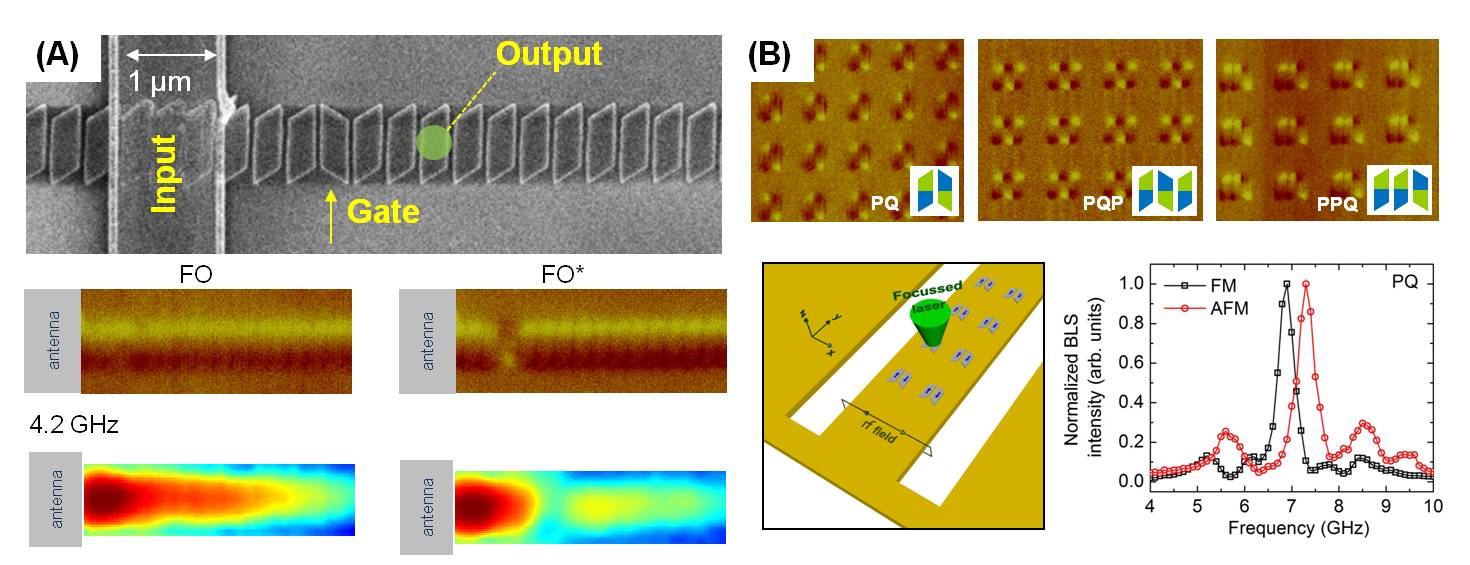Nanomagnonic logic  A spin wave represents a phase-coherent precession of microscopic vectors of magnetization in magnetic medium and can be considered as a magnetic analogue of a sound or light wave. Interest in propagating-spin-wave based devices has grown in the last few years largely due to advances in nanotechnology which allows shapes of geometrically confined magnonic elements to be fabricated, the development of new advanced experimental techniques for studying high-frequency magnetization dynamics and the potential use of spin waves as information carriers in spintronic applications. A spin wave represents a phase-coherent precession of microscopic vectors of magnetization in magnetic medium and can be considered as a magnetic analogue of a sound or light wave. Interest in propagating-spin-wave based devices has grown in the last few years largely due to advances in nanotechnology which allows shapes of geometrically confined magnonic elements to be fabricated, the development of new advanced experimental techniques for studying high-frequency magnetization dynamics and the potential use of spin waves as information carriers in spintronic applications.
Nanomagnets are the key elements of any nanomagnetic or spintronics devices. Nanomagnets which possess multiple remanent magnetic states and can be switched ultrafast manner is of paramount importance for various application. Magnetic remanent states are governed by a energy minimization process between competing energies such as anisotropy, demagnetization field and dipolar field from their neighbors. We proposed nanomagnetic chain and networks made from rhomboid shaped magnets for magnon transport and logic-type applications [1,2].
In Fig A, nanomagnetic chains were used as wave guide for spin waves which also enables local manipulation which is of great importance for logic applications. Microwave excitation is used as an input for spin wave generation and micro focused Brillouin light scattering technique was used as a method for detection of spin waves at the output. In Fig. B, collective dynamic response of the two dipolar coupled nanomagnets was used for demonstrating logic operation. Different input states was achieved by stabilizing different magnetic remanent configurations.

References:
-
A. Haldar, D. Kumar, and A. O. Adeyeye, “A reconfigurable waveguide for energy-efficient transmission and local manipulation of information in a nanomagnetic device,” Nature Nanotechnology, Advance Online Publication (Feb 1, 2016).
-
A. Haldar and A. O. Adeyeye, “Determinstic control of magnetization dynamics in reconfigurable nanomagnetic networks for logic applications,” ACS Nano 10, 1690-1698 (2016).
|

